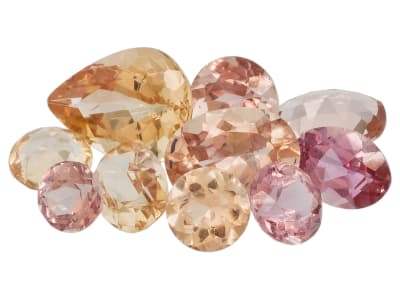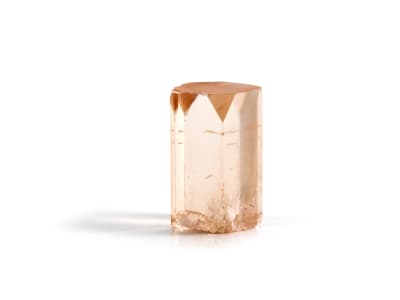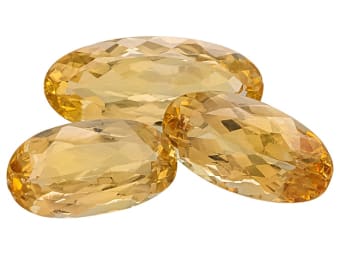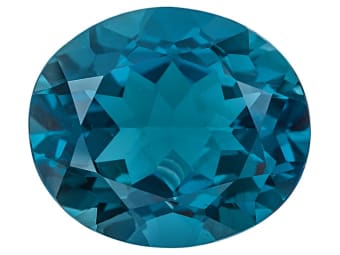The history of topaz spans many centuries and a multitude of civilizations. The derivation of the name topaz is unclear. Some sources suggest the name was derived from the Red Sea island Topazos. Other sources state that the name comes from the Sanskit root tapas (fire) which alludes to the color of reddish-orange topaz crystals. Most jewelry consumers are familiar with the various shades of blue topaz found in the market. Topaz can also be found in colorless, brown, green, orange, pink, red, and yellow colors. Imperial topaz, which is orange to red in color, is the rarest and most valuable variety of topaz.
General Information
LWUV: Variable
Topaz Colors
-
 Bi-color
Bi-color -
 Blue
Blue -
 Blue
Blue -
 Blue
Blue -
 Blue
Blue -
 Blue
Blue -
 Brown
Brown -
 Colorless
Colorless -
 Gray
Gray -
 Green
Green -
 Multi-color
Multi-color -
 Orange
Orange -
 Pink
Pink -
 Pink
Pink -
 Purple
Purple -
 Red
Red -
 Red
Red -
 White
White -
 Yellow
Yellow -
 Yellow
Yellow
Alternate Names
Sherry Topaz, Hyacinth Topaz, Imperial Topaz, Precious Topaz, Swiss Blue, London Blue, Mystic Topaz
Countries of Origin
Tanzania, United Republic Of; Myanmar; Afghanistan; Russian Federation; Romania; Cambodia; Sri Lanka; United States of America; Madagascar; Thailand; Switzerland; Bolivia (Plurinational State of); French Polynesia; India; Mozambique; Pakistan; Unknown; Botswana; China; Namibia; Brazil; Mexico; Nigeria
History
The stones in the blue shades of topaz are Sky Blue, Swiss Blue, and London Blue. Sky blue is very much like aquamarine in its color range. London blue is a darker-blue tone and Swiss blue is the bright, electric, more vibrant blue of the three. Swiss blue is one of the prettiest and most popular of the blue topaz with its intense blue color range. Described as vibrant, electric, or super blue, Swiss blue topaz can be compared to the rich colors of the Caribbean Sea. Whichever you choose to brighten your day, the topaz blues are well-liked, gorgeous, and affordable. Topaz is a very popular gemstone. Why? Because it delivers a winning one-two punch of wear-ability and affordability. Plus, it's a knockout when paired with many colored stones. Topaz is also a popular birthstone, as blue topaz is December's primary birthstone and yellow topaz is a birthstone option for November. Some April babies wear white topaz as an alternative to the more expensive diamond. Topaz has been around for many centuries, and although not as well-known as the big four precious stones, it has its own, well-deserved following. An eight on the scale of hardness, it can easily stand up to regular wear. It's commonly treated, which is okay with us. The treatments give it intensified color and beauty. Topaz has a lot to offer and a lot to recommend it. No wonder it's so popular!
Care
Normal care for colorless and untreated or heated yellow, orange, imperial topaz, varieties of blue topaz stones. Brown and champagne stones may fade with exposure to sunlight. Color will fade in green topaz stones when exposed to sunlight and high heat. Avoid ultrasonic cleaners, alcohol, and harsh chemicals, repolishing, scratching or abrading CVD coated stones because color coating may be chipped or scratched off.
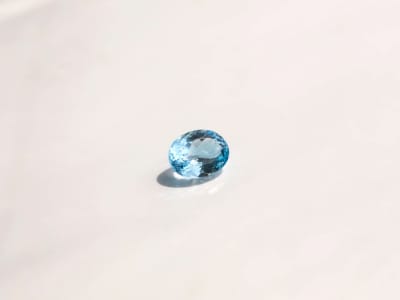
More About Topaz
During the Middle Ages, topaz was invested with many powers. It was believed that it could strengthen the mind and prevent death. It was once recommended as a cure for madness as well as a talisman to increase wisdom and prudence. Many believed that it could cool a bad temper and boiling water.
Species/Variety
Colorless Topaz
Colorless topaz is often called white topaz in the trade. The material from Klein Spitzkoppe, Namibia has been marketed under the misnomer “Silver Topaz”. Colorless topaz is often brown topaz that has been heated to remove the color. Colorless topaz is frequently treated to create blue or Mystic® topaz.
Precious Topaz
Some gem experts will only call stones that are yellow or orange precious topaz, but others will apply the term to any topaz that does not display a strong multicolor effect. The color can be attributed to chromium in the stone. The stones are sometimes heated to bring out the reddish coloration in the material.
Pink or Precious Pink Topaz
Pink topaz is known to come from Pakistan, Brazil and the Sanarlza River in Russia and the color comes from Chromium in the stone. The pink stones from Katlang, Pakistan have a slight violet tone and do not need to be treated. The stones from Brazil are typically heat treated to obtain their pink color.
Mystic Topaz
Mystic Topaz® first appeared in September 1998 at the Hong Kong Jewelry Fair, but it took a few years for designers and high-end jewelry manufacturers to realize its unquestionable charm. Mystic Topaz® begins with a natural topaz gemstone that was created millions of years ago, that is then made even more beautiful and desirable with the assistance of modern technology. The chemical vapor deposition (CVD) process deposits a thin film onto part of the surface of a white topaz gem, creating an eye-catching rainbow effect as light passes through the gem, which results in an unbelievable array of colors.
Blue Topaz
The color in blue topaz is caused by color centers induced by natural or artificial radiation. Blue topaz caused by natural radiation is rare. Almost all of the blue topaz in the market is treated after it is mined. The color ranges from deep greenish blue of London blue topaz, the medium blue of Swiss blue, and the paler blue tones of sky blue and glacier blue.
Imperial Topaz
At the height of Imperial Russia's power, orange-pink topaz was brought from Brazil to decorate the jewelry of the Tzarina. Since then, these colors have been known as imperial topaz, and still today remains one of the most coveted topaz varieties. Interestingly enough, some sources dispute this legend and state that imperial topaz was indeed named in honor of the Brazilian ruler in power at the time, Emperor Don Pedro. Classified as a rare collector's gem, the world's supply of imperial topaz comes from sources in the Brazilian state of Minas Gerais. It is generally the reddish-orange or orange-red variety of topaz that's considered "imperial." Some also consider yellowish-orange, cognac-colored and pure orange to be imperial topaz.
